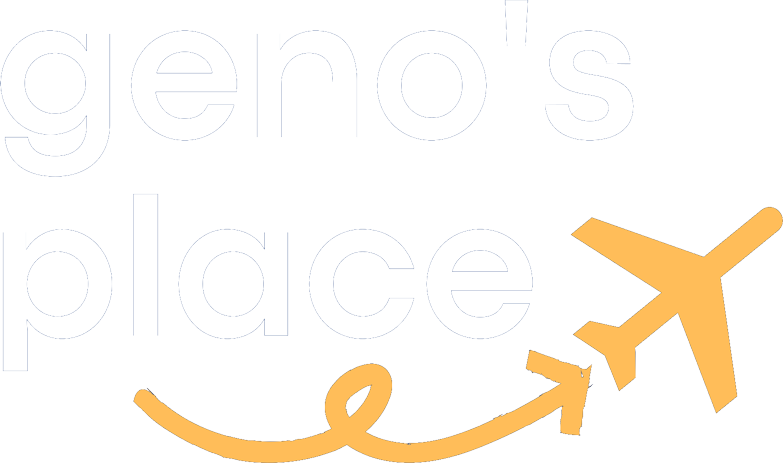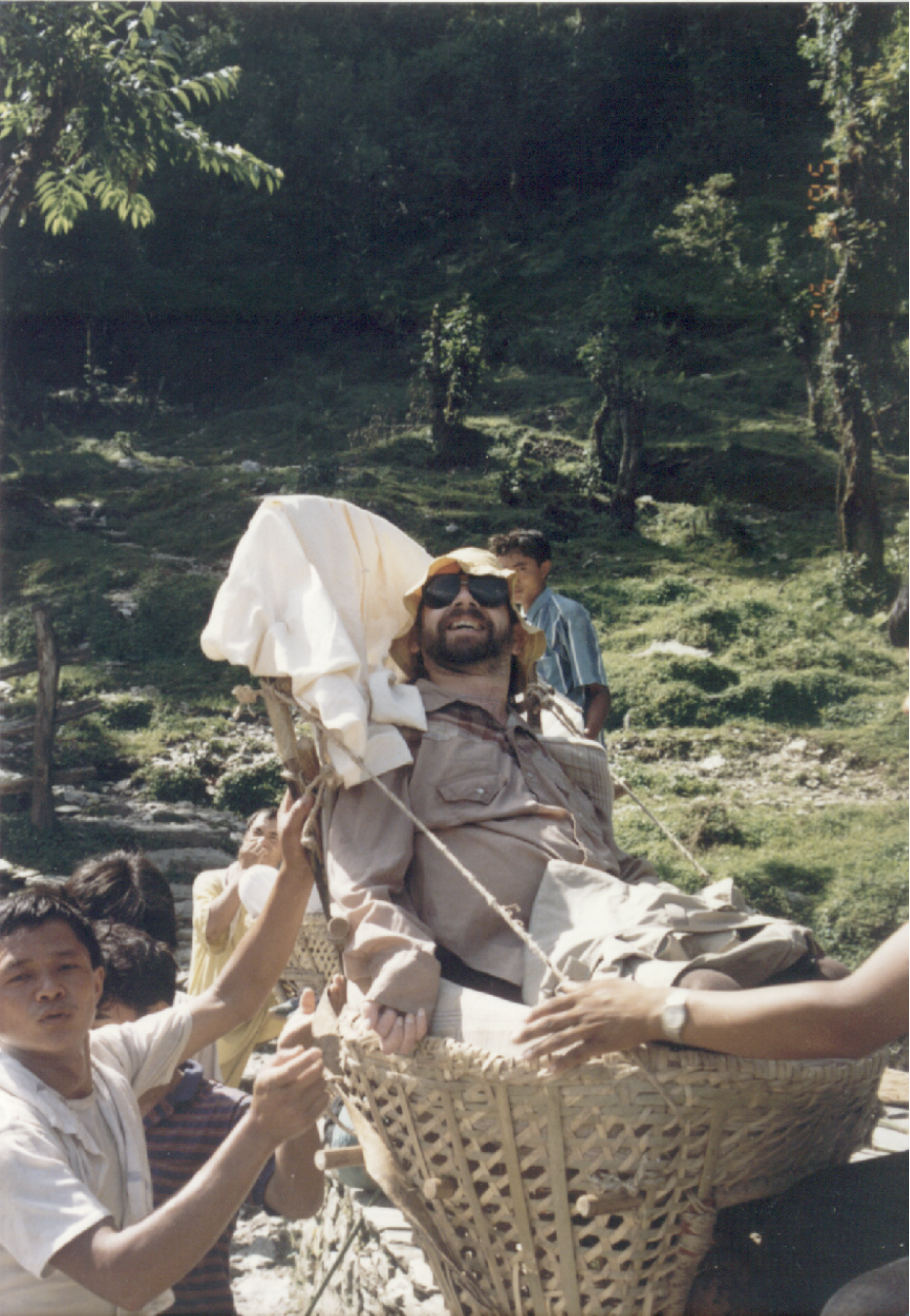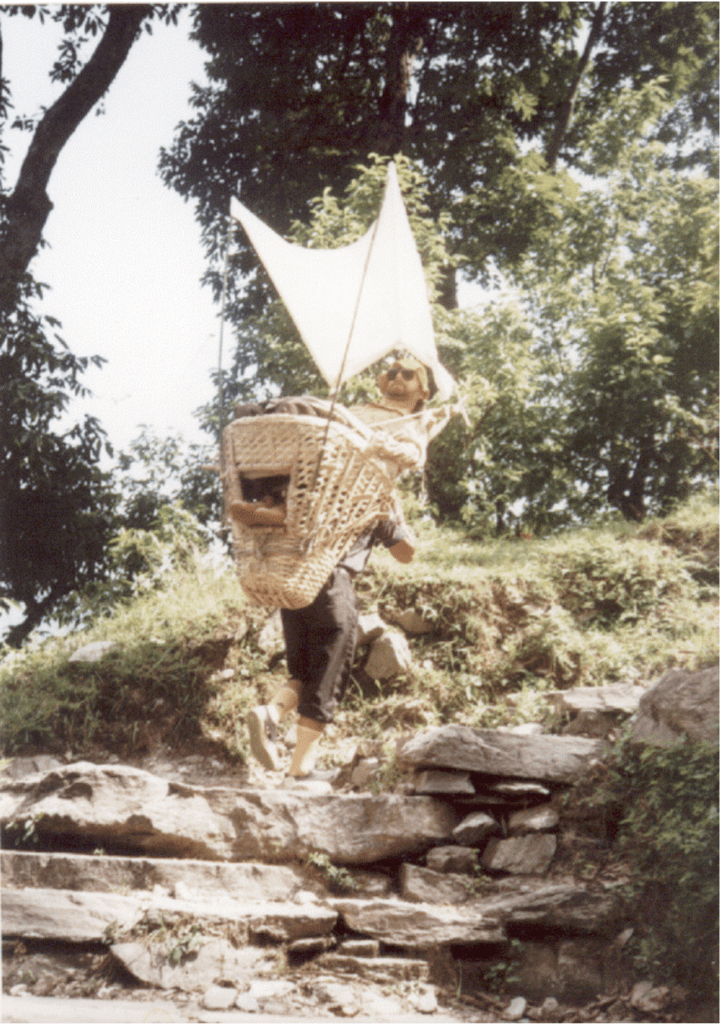
When he opened the door to the hut the bright sun light seemed almost blinding.
Tsering was one of the Sherpas I hired to carry me up and down the mountains. A Sherpa is a native of the Sherpa area of Nepal. The word Sherpa is sometimes mistakenly applied to all porters. I hired 4 Sherpas to take turns carrying me, one at a time, on their back. They put me in big wicker basket called a doko and carried me up and down steep mountains and across foot bridges like the kind you see in Indiana Jones movies. A doko is usually used to carry supplies or small children. It is light yet strong.
Tsering was one of the Sherpas I hired to carry me up and down the mountains. A Sherpa is a native of the Sherpa area of Nepal. The word Sherpa is sometimes mistakenly applied to all porters. I hired 4 Sherpas to take turns carrying me, one at a time, on their back. They put me in big wicker basket called a doko and carried me up and down steep mountains and across foot bridges like the kind you see in Indiana Jones movies. A doko is usually used to carry supplies or small children. It is light yet strong.
After I got some help getting dressed and into my wheelchair, I was treated to more black tea and some Tibetan bread. Tibetan bread is best described as a flat fried donut. It is served with jam or honey.
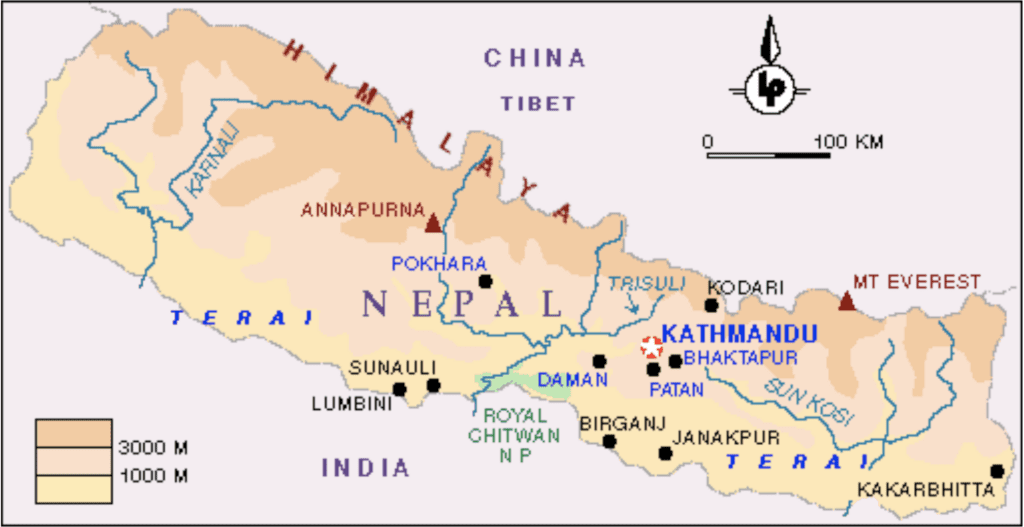
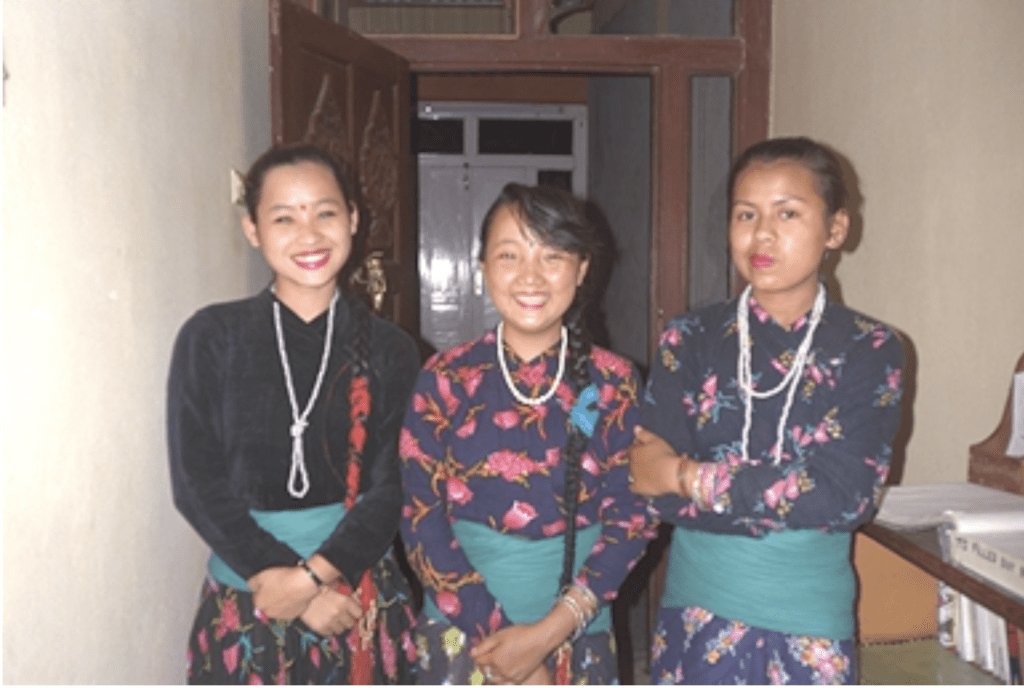
During breakfast we enjoyed looking at the mountains. The mountain that Tsering spoke of is Machhe Puchhare (Fishtail), one of the more famous of the Himalayan mountains. Nepal is famous for having seven of the eight tallest mountains in the world. The tallest mountain here in Nepal, in fact in the world, is Mount Everest. Because Everest is so tall, the peak is only visible from certain areas of Nepal and only when there is no cloud cover.
After breakfast it was time to start trekking again. Trekking refers to hiking along the trails that link Nepal’s isolated villages and settlements and is similar to backpacking. However, while people go backpacking to get away from people, in Nepal you are a visitor to peoples’ homes and villages. Besides other trekkers, we shared the trails with pack animals (burros) and porters who carried supplies to the remote villages.

The Sherpa put the strap of the doko on top of his head, with the other end of the leather strap wrapped around the lower part of the doko. He stood up, with me still in the doko, and tested the weight and balance on his back. No sooner had I been seated in the doko than I found myself mobile, on the back of a Sherpa. He walked hunched over, dispersing much of my weight on his back.
When I got too hot I would shout “panny” (the Sherpa word for water). Since very few Sherpas speak English I had to learn some of their language. When I said “panny”, they stopped, took my hat and soaked it in cold water coming out of one of the many pipes stuck in the mountain. They put the hat back on me to cool me off. There are many places where the Nepalese just insert a long bamboo shaft (that has holes in it) into the mountain. Often times that is all that is necessary to catch run off water which filters through the mountains. Although all the Nepalese drink this water, we brought our own bottled water, that way we didn’t need to worry about bacteria in the water.
Sometimes when we stopped I would say, ”Photo”, and point at something. They would take my camera and snap a picture. The Nepalese were very helpful – it is part of their culture. Most didn’t speak English but that didn’t stop them. If it looked like I needed help eating or laying down or doing just about anything, the Sherpas were sure to offer their assistance. They are very kind and gentle people.
Twice a day we would stop to eat. The main dish for the Nepalese is daal bhaat which consists of white rice and lentil soup and usually plain or curried green vegetable.

Other Nepalese foods include boiled potatoes, brown bread, fried potatoes, pasta (with onion, vegetable and/or cheese), instant noodle soup, pizza, and yak cheese.
The village has electricity (over a third do), it will come on after dark and the lodges usually have only a single light bulb per room. There are no TV’s, radios, electric stoves, washers, dryers, or computers in the mountains. The Nepalese generate electric power with miniature hydroelectric stations. As glaciers melt, their water runs down the mountains. There are many places where hydroelectric stations are set up to take advantage of this runoff.
When our trekking was over I was sorry to say goodbye to our Sherpa friends. Even though we didn’t speak the same language we got along very well.
for kids: Story questions
- Can you find Nepal on an atlas?
- I flew into Kathmandu, then drove to Pokhara, then drove to Annapurna to start my trek. Can you retrace my journey?
- How far is it from Kathmandu to Annapurna?
- How do the Nepalese look different from most Americans?
- Would you like to live in Nepal? Why or why not?
- Most Nepalese are Hindu, many are Budist. What does that mean and what role does it play in their culture?
- How would you prepare to go trekking in Nepal?
- What is hydroelectric power?
- Have you ever been on a bridge like the one below?
